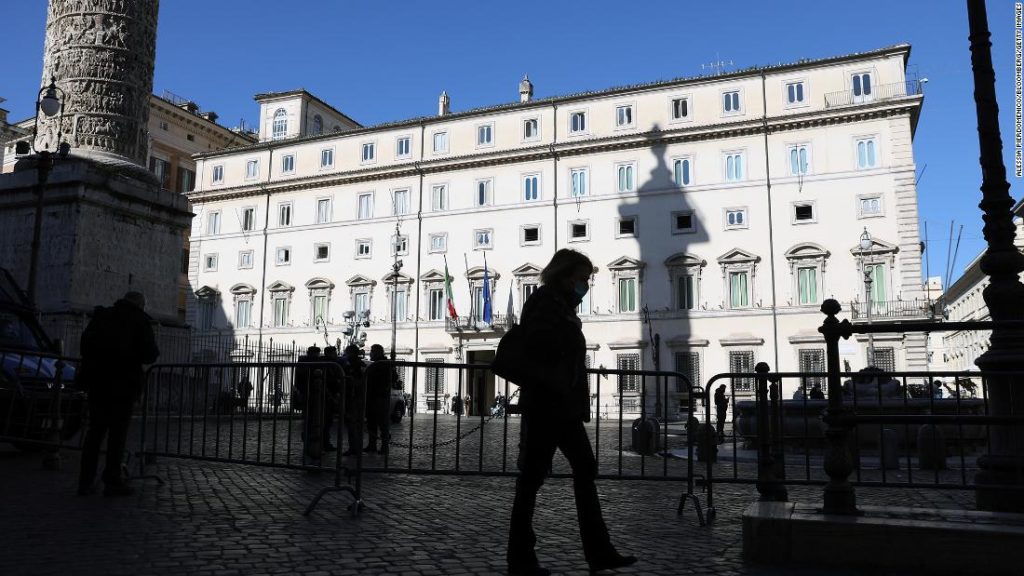Spurred on by rock-bottom rates, governments issued $16.3 trillion in debt in 2020, and they’re expected to borrow another $12.6 trillion this year, according to S&P Global Ratings. But fears are growing that an explosive economic comeback starting this summer could generate inflation, potentially forcing central banks to raise rates sooner than expected.
Many economists think the threat of inflation may be overplayed. But political leaders, worried they’ll need to make difficult tradeoffs in the years ahead, are watching the situation closely.
Waiting for inflation
The moves have been triggered in part by growing confidence about the next phase of the pandemic. As vaccination campaigns allow governments to lift some restrictions, consumers are expected to rush to restaurants and hop on planes. That could push up prices, which central banks have pledged to keep under control.
Still, S&P Global Ratings pointed to inflation as a potential concern in a report on sovereign debt this month, noting it “could push central banks to increase interest rates, partially reversing the benefits of low debt-servicing costs.”
“A big jump in interest rates would be very costly,” said Ugo Panizza, professor of international economics at the Graduate Institute in Geneva. “Central banks will face very, very complicated tradeoffs if inflation does go up.”
UK sounds the alarm
The Congressional Budget Office projects that publicly-held government debt in the United States will climb to nearly $22.5 trillion by the end of fiscal 2021. That’s equivalent to 102% of annual gross domestic product. In Italy, the ratio stood at 154% at the end of September, while Greece was almost at 200%.
The high debt levels leave government finances more exposed to interest rate hikes. Take the United Kingdom, where public sector debt has also soared to a level where it nearly equals the size of the economy.
The Office for Budget Responsibility estimates that if short- and long-term interest rates were to rise by just 1 percentage point, debt interest spending would increase by £20.8 billion ($29 billion) in the 2025-26 fiscal year.
While that wouldn’t necessarily be unsustainable, it’s definitely not desirable, according to Isabel Stockton, an economist at the UK’s Institute for Fiscal Studies.
“Everyone would prefer to give that £21 billion to the [National Health Service] or [to] improve the welfare system or infrastructure,” she said.
Interest costs are even more sensitive to inflation and rate hikes because of the pandemic response.
The UK government borrowed £270.6 billion ($377 billion) between April 2020 and January 2021, and higher interest rates mean increased payments on that debt.
Around a quarter of UK government debt is linked to inflation, according to the Institute for Fiscal Studies, meaning payouts increase automatically if prices rise. On top of that, the Bank of England has purchased huge amounts of government debt as part of its quantitative easing program. The central bank pays interest on the reserves it creates to make those purchases.
If interest payments go up while economic growth lags, politicians are left with tough choices: hike taxes to cover the budget shortfall, or cut spending.
Sunak made the country’s debt burden a central issue when unveiling his spending proposals last week, which included plans for a large tax hike on the biggest British companies in 2023.
“Just as it would be irresponsible to withdraw [economic] support too soon, it would also be irresponsible to allow future borrowing and debt to be left unchecked,” he said.
A global problem
Similar dynamics could play out around the world.
The Organization for Economic Cooperation and Development said in a report last month that even though interest costs are currently low, elevated levels of existing debt, combined with ongoing borrowing needs, have raised refinancing risks. About one quarter of market-traded debt from member countries — or $14.1 trillion — will mature within one year, according to the agency.
“It is a real concern,” said Randall Kroszner, who served as a Federal Reserve governor from 2006 until 2009. If US debt payments suddenly go “from being quite low to being quite significant,” that could weigh on the recovery and slow economic activity, he added.
Countries that don’t control their own currencies could be in especially tight positions, Panizza said. Italy, which uses the euro, is one example.
Panizza said that Italy needs to refinance or extend the due date of about one-seventh of its debt every year. If interest rates were to go up by 2%, that would add about half a point of GDP, or roughly $9.9 billion, to debt servicing costs annually. That’s a “substantial” amount, he emphasized.
A spike in inflation may never materialize; for decades, global inflation has remained stubbornly muted. And a booming economy would also boost how much money governments bring in from taxes, helping to ease some deficit anxiety.
But there’s no denying that central banks could face a tough set of choices as the world economy emerges from an unprecedented shock, and that a wide range of outcomes remains on the table.
“This is not something that we have a lot of experience with,” Kroszner said.
You may also like
-
Afghanistan: Civilian casualties hit record high amid US withdrawal, UN says
-
How Taiwan is trying to defend against a cyber ‘World War III’
-
Pandemic travel news this week: Quarantine escapes and airplane disguises
-
Why would anyone trust Brexit Britain again?
-
Black fungus: A second crisis is killing survivors of India’s worst Covid wave

